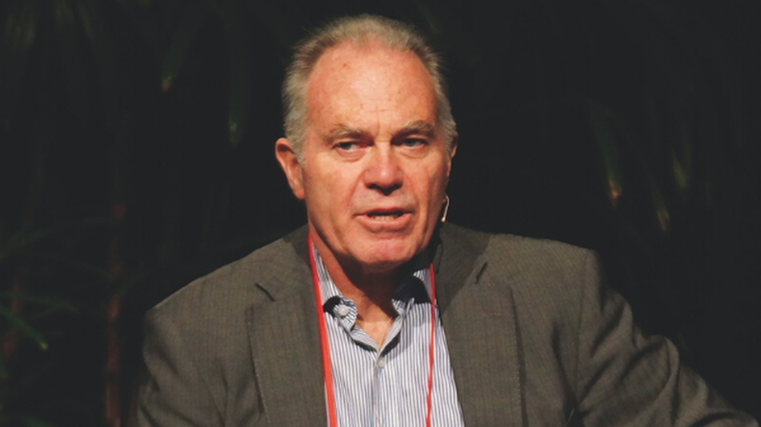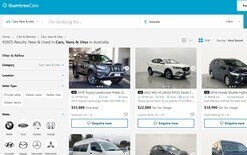Industry ‘call to action’

The Imported Motor Vehicle Industry Association (VIA) has described the clean-car policies as an example of “social engineering” by the government.
The programme’s aim is to drive down carbon dioxide (CO2) emissions by targeting light vehicles – passenger and commercial.
However, David Vinsen, VIA’s chief executive, says the increases in costs that the industry is experiencing are not unintended side effects of the polices, “they are the purpose of the programme – to force behaviour change by hitting people financially”.
Vinsen, pictured, was one of the guest speakers at a clean car standard (CCS) management forum hosted by vehicle shipping and logistics company Moana Blue in Auckland on February 9.
During his presentation, he told attendees that the clean-car policies were nothing to do with “clean cars” because that issue had already been dealt with by past vehicle emissions rules with that legislation being tweaked from time to time.
“This is all about reducing greenhouse gas emissions and improving fuel efficiency to drive down CO2 emissions,” he said, adding the costs of the clean-car policies were “to hurt people in their pockets and force them to change their behaviour. It’s a case of social engineering through your wallet, which was always the government’s intention”.
Describing the CCS as “tremendously complicated”, he stressed it and the clean car discount (CCD) hadn’t “created” unintended and unexpected consequences on supply and affordability because the policies had been aimed at creating such outcomes – and those outcomes were seen by the government as being critical to change the industry and consumers.
He added that one positive to have resulted from the clean-car policies was that VIA had “never had so much co-operation with the NZTA. It was given a hospital pass by the government last year when all this was dumped on the agency. At one stage, it had to employ 82 extra staff across IT, its help desk and communications.”
Clean car discount
Vinsen recapped the journey the industry has been on to get to where it was now. It started with phase one of the CCD, to influence demand, being launched in July 2021 with the second stage getting under way last April.
He said: “Although promised regular reviews and updates, we have not seen any discussion or proposals around updates or changes.”
Vinsen explained the feebate scheme provided buyers with subsidies when buying low CO2-emitting vehicles and charged penalties to consumers buying high emitters. The system was intended to be cost-neutral, but is currently more than $100 million in deficit.
As for industry concerns with the CCD, one is the penalty rate. “During the design of the programme, we agreed to the idea that used imports should be only eligible for half the subsidy compared to new imports, but that would be balanced by only being subject to half the penalty,” said Vinsen.
“The rationale for this was that, on average, used imports have already consumed half their life in a foreign jurisdiction and we wouldn’t penalise or reward New Zealand buyers for that.
Unfortunately, implementation was significantly different than expectation.
“There are significant differences in how CO2 is calculated for new and used PHEVs [plug-in hybrids], giving new-car importers a significant market advantage.
“For example, a NZ-new Prius is assigned a rate of about 20gCO2/km, whereas the Japanese variant, which is slightly more efficient, is assigned a value of 86gCO2/km. This is anti-competitive and buyers of used PHEVs have been ripped off since the start of the programme in July 2021.”
VIA was also concerned that the CCD is anti-competitive, said Vinsen. The association has members trying to import functionally new cars with negligible mileage.
He added “used-car importers” aren’t considered to be parallel importers by Waka Kotahi. “Regardless of the condition of the goods imported, as used-car importers everything we import is automatically defined as ‘used’.
“This is anti-competitive by categorically limiting competition even when we supply a vehicle in identical condition to a ‘new car’. It also limits access to subsidies for vehicles in identical condition.”
As for the future of the CCD, its “design and existence are currently being reconsidered for political and financial reasons”.
“Act and National have expressed interest in scrapping the CCD. The Greens have expressed support for EU solutions where penalties were drastically increased to fund further subsidies.
“We haven’t seen any arrangements for reviews, or the unders and overs, for the scheme. When it comes to the CCD and consumers, the government is in a $100m hole and is now scrabbling around about how to adjust it. It’s a real issue that we pointed out to the minister in 2018.”
Clean car standard
As for the CCS, its purpose is to influence supply. Following its launch on January 1 this year, the next important date is June 1, 2023, which is when culminated fees will become due.
Then, in January 2024, the first target update will kick in as an annual change.
Vinsen described the CCS as another “feebate” scheme in that importers must pay levies for bringing in less-efficient vehicles or receive credits for importing more efficient models that can be used to offset penalties. Efficiency ratings are weight-adjusted, so lighter models have stricter targets and heavier vehicles have less-strict targets.
He said VIA’s first concern was that the purpose of the CCS was to be a tax. “During the design of the programme, we knew based on international experience – such as in the EU – that the CCD segment of the programme would run out of money.
“We argued the programme should be cost-neutral with money collected by the CCS helping to fund the CCD. Instead, this government decided the CCD should be cost-neutral and the CCS levy goes into the general transport fund. With this dynamic, the CCS has simply become a tax – a generic funding tool.”
Another issue will be the lack of future CO2 credits. “The CCS, as currently designed, will become prohibitively strict by the end of the decade – everything but EVs and the most efficient PHEVs will be penalised,” said Vinsen.
“Yet, we already know there will be insufficient supply of either to meet the requirements of the programme. The real risk though, isn’t the penalties, but the lack of credits to offset those penalties.”
VIA’s suggested solution to the government was that the CCS should be paired with a cost-neutral scrappage scheme that awards credits to address this risk.
As for the CCS’ future, Vinsen said: “National has expressed interest in repealing the CCD just leaving the CCS. Act has committed to repealing the entire clean-car programme, both the CCD and CCS.”
He added that preventing people from buying the wrong cars by mistake was one of the reasons given for the CCS when it was first put on the table by the government.
“The worst date of the year was chosen to implement it. The NZTA wasn’t ready and didn’t have its systems in place, so we negotiated a six-month stretch with the government with importers not being invoiced until June. That, in itself, is a risk because people will have to front up with the money.
“There will be annual updates to targets with unders and overs, and the weight adjustment has complicated it. There will be some trading with credits and some people talking about external platforms. The NZX and Trade Me have been interested in doing this in the past.”
As for credits gained under the CCS, Vinsen warned against these being built up as an asset on car dealers’ balance sheets because that would reduce margins. “It is a squeeze on a lot of dealers and importers.
“Hopefully, the CCS will be reworked based on affordability and achievability, and done so pragmatically. We are working with the Minister of Transport as well as opposition parties so there’s an understanding of what the key questions are.
“With the legislation having gone through, there’s no point in fighting a rearguard action. But over the next five years we can work to mitigate the worst of it so it causes the least aggravation for the industry.”
Ongoing issues
“The government has had difficulties and challenges identifying specific vehicles and matching them to its dataset,” said Vinsen. “Since the launch of the programme, VIA has been trying to help the government address this issue.”
Since VIA withdraw its support for the clean-car policies, the association and the government have received fewer complaints although VIA “has heard this is more likely due to apathy, not satisfaction or resolution”.
In a call to action, Vinsen said: “VIA strongly recommends that importers challenge any incorrect vehicle data even if there’s an expectation of failure.
“There have been fewer complaints lately, so the government may be thinking that it’s got it right. But VIA’s advice is to challenge any data issues. You need to make sure you get it clarified even if you don’t think you will get it across the line.”
He added there was a counter purpose with the clean-car programme aiming to influence supply and demand.
“The lack of a tool that will allow vehicle suppliers to look up ‘official’ vehicle data and lock it in leaves the industry without a meaningful option that influences supply.” While a quick look-up tool is now being worked on now by Waka Kotahi, the absence of one “has been very frustrating”.
And problems with the treatment of data for used imports, such as the way the efficiency of PHEVs is calculated, are “perverting the intended influence on demand buyers”.
As for accrued penalties under the CCS, Vinsen said there was a risk of the cost due in June not being understood. “Some in the industry may not understand their obligations and may not be setting aside money to cover the penalties they might be incurring.”
He called for industry action on two fronts with the first being that VIA strongly recommended importers check their CO2 accounts set up for the CCS and make arrangements to set aside the appropriate amount of money.
The second call was that now’s an opportunity for service providers in the industry to assist their customers by reminding them of this obligation by asking some questions. Do you have a CO2 account? Are you monitoring it? Do you know what you owe? Are you aware that the total will be due in June 2023?
“There is a risk of costs being accrued when they became due in June,” stressed Vinsen. “Our advice to dealers is to check your CO2 accounts and put money aside for when you get an invoice from the government. You need to monitor how much you owe and to be aware of what you need to cough up in June.”





